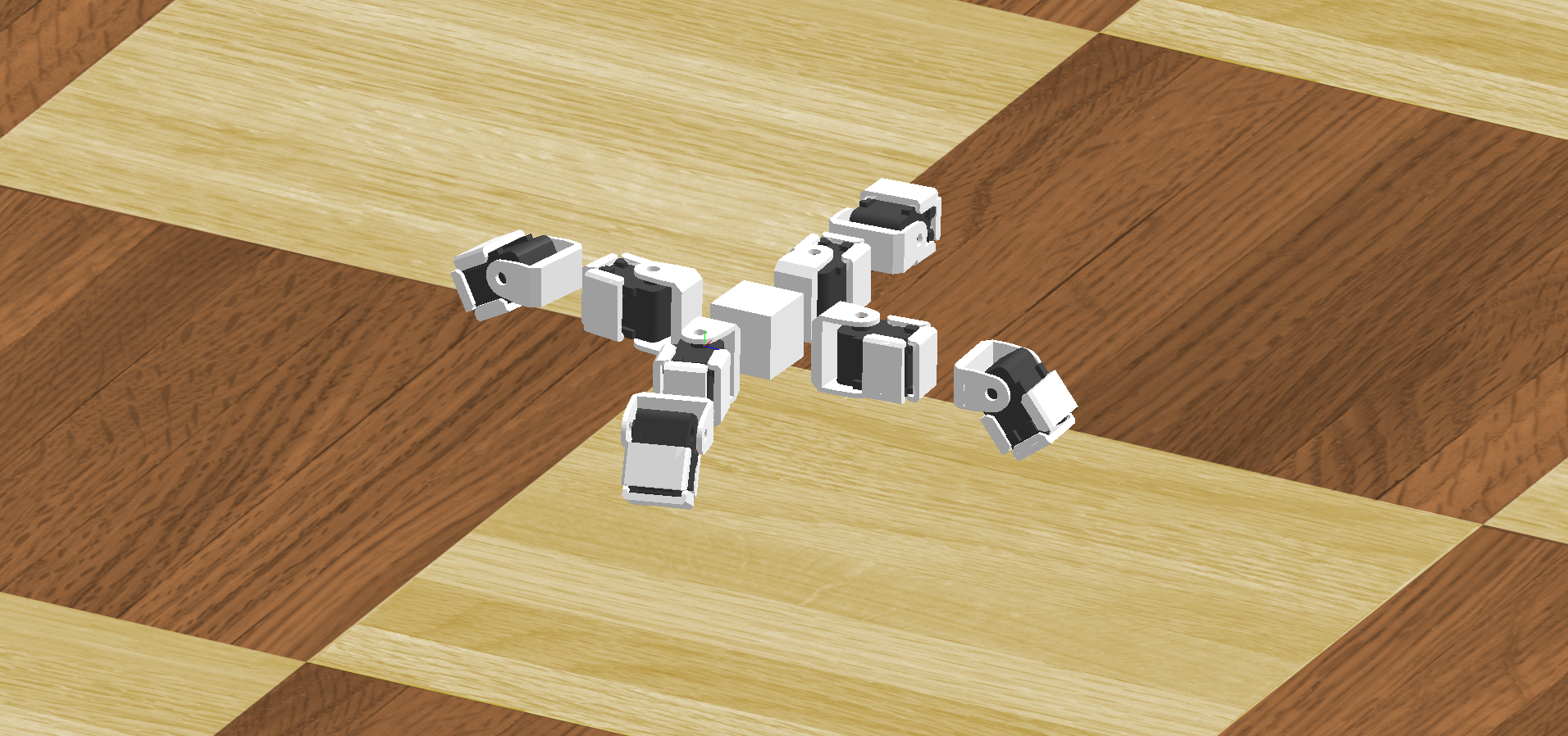Abstract
Study on the effect of compliance in a modular robotic structure. The structure used is a quadruped robot where a compliant element is inserted between every two adjacent modules. The compliance of each element is varied individually resulting in a distribution distribution of compliance over the structure. The structure was built with the Bioloids kit and modeled in simulation using Webots, a physics simulation software developed by Cyberbotics Ltd. The effects were studied on two types of rough terrains in order to represent real environments, such as the Mars terrain.
As a first step, a Particle Swarm Optimization was used to optimize the gait of the robot in order to achieve fast, straight and stable gait on rough terrain. The robustness of the robot to external disturbances was tested and the robot’s inherent stability was showed.
Systematic searches on the compliance values were used to test their effects. Later, a Particle Swarm Optimization was used to retest and validate the searches. Two main patterns were observed resulting in two hypotheses concerning the impact of compliance on the quadruped’s locomotion. Hypothesis 1 claims that the inner compliant elements of the structure should be stiff. This hypothesis was supported by all the datasets. Hypothesis 2 claims that the outer compliant elements of the structure should be softer. This pattern was observed in a large part of the results, but is not very decisive and is not present in all the datasets. A lower limit for compliance was also observed.
The big impact of compliant elements on the locomotion’s stability and speed was shown. This effect requires more research to be definitively established, using different structures and gaits.
Key words: Modular robots, Locomotion, Compliance

Videos
Best gait resulting from PSO with compliant elements on 5% roughness
Files
Git folder: git.epfl.ch/repo/roombots-adi.git